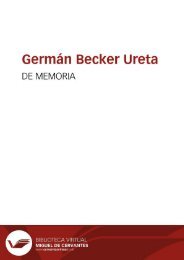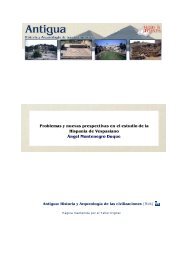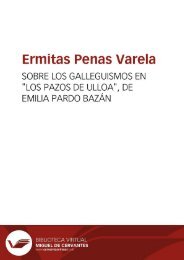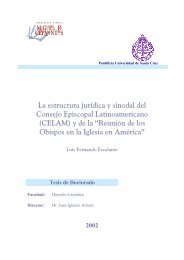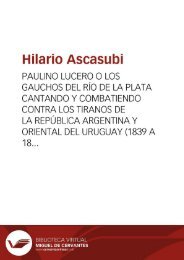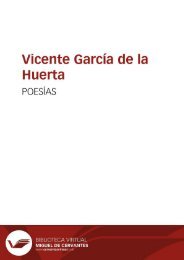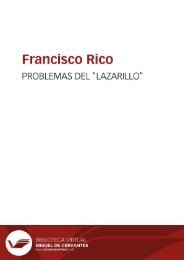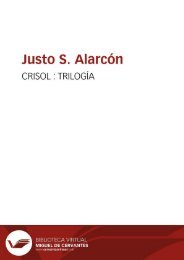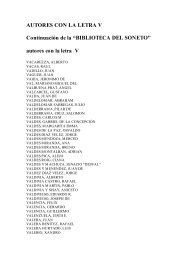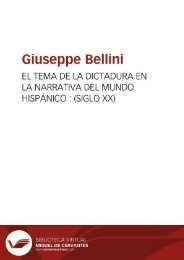You also want an ePaper? Increase the reach of your titles
YUMPU automatically turns print PDFs into web optimized ePapers that Google loves.
Anales galdosianos [Publicaciones periódicas]. Año XII, 1977<br />
root problem for critics. If he is autonomous, who made him that way? Who gave him his name? How<br />
can he be autonomous and such a perfect little bourgeois? Doesn't the structure of illusion within an<br />
illusion simply amount to fabrication? The problem is worth discussing.<br />
But whether or not Máximo is autonomous -namely, free by appearances- is secondary to the illusion<br />
that he is. Though proportionately in greater view, the human disposition of Máximo Manso is always<br />
subservient to his fictional substance. The readers who fail to perceive that fact have ignored or<br />
forgotten the first chapter and many details of the narration. They have accepted all too readily<br />
Manso's invitation, « Vedme con apariencia humana » (1, 2), and disregarded with equal alacrity<br />
his admonition that he speaks without possession of a voice and writes though he has no hands. The<br />
narrative trick that makes Máximo appear transcendentally conscious of his fictionality and therefore<br />
not to be <strong>Galdós</strong>' creation makes the novel appear to be Máximo's creation. El amigo Manso is<br />
therefore a metanovel -a novel that investigates the nature of the novel, art about art. The autonomous<br />
-or supposedly autonomous- character in El amigo Manso raises not so much the question of <strong>Galdós</strong>'<br />
bold novelistic technique in this particular work (a major concern of the critics who have paused<br />
to comment on the device), but the whole broad problem of fiction, its birth, the relationship of its<br />
constitutive elements, its power, and its immortality 127 . <strong>Galdós</strong>' novel strikes beyond its evident link<br />
with Don Quijote to display the artistic self-consciousness that is so very much a twentieth-century<br />
phenomenon.<br />
Lest El amigo Manso be taken as a momentary aberration, a measure of <strong>Galdós</strong>' whimsicality in<br />
1882, it is well to recall that throughout his career he made manifest directly within his novels his<br />
preoccupation with the creative process. In the last chapter of Fortunata y Jacinta , in the funeral<br />
scene, one sentence stands out for its bizarre timbre in the context of a mimetic narrative: « En el<br />
largo trayecto de la Cava al cementerio, que era uno de los del Sur, Segismundo contó al buen Ponce<br />
todo lo que sabía de la historia de Fortunata, que no era poco, sin omitir lo último, que era, sin duda<br />
lo mejor; a lo que dijo el eximio sentenciador de obras literarias que había allí elementos para un<br />
drama o novela, aunque, a su parecer, el tejido artístico no resultaría vistoso sino introduciendo ciertas<br />
urdimbres de todo punto necesarias para que la vulgaridad de la vida pudiese convertirse en materia<br />
127 One is tempted to agree with José F. Montesinos' apparent hyperbole: « Nunca como en<br />
esta novela irónica ha comprendido el escritor tan claramente el sentido de su actividad creadora<br />
» ( <strong>Galdós</strong> , II [Madrid: Castalia, 1969], p. 29), but precisely because in the context of our discussion,<br />
the statement -ironically- is not hyperbolic at all.<br />
92



